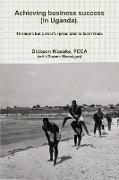- Start
- The Changing Landscape of Youth Work
The Changing Landscape of Youth Work
Angebote / Angebote:
A volume in Adolescence and EducationThe purpose of this book is to compile and publicize the best current thinking about training and professionaldevelopment for youth workers. School age youth spend far more of their time outside of school than inside ofschool. The United States boasts a rich and vibrant ecosystem of Out-of-School Time programs and funders, ranging from grassroots neighborhood centers to national Boys and Girls Clubs. The research community, too, hasproduced some scientific consensus about defining features of high quality youth development settings and theimportance of after-school and informal programs for youth. But we know far less about the people who provide support, guidance, and mentoringto youth in these settings. What do youth workers do? What kinds of training, certification, and job security do they have?Unlike K-12 classroom teaching, a profession with longstanding - if contested - legitimacy and recognition, "youth work" does not call forth familiarimagery or cultural narratives. Ask someone what a youth worker does and they are just as likely to think you are talking about a young personworking at her first job as they are to think you mean a young adult who works with youth. This absence of shared archetypes or mental models ismatched by a shortage of policies or professional associations that clearly define youth work and assume responsibility for training and preparation.This is a problem because the functions performed by youth workers outside of school are critical for positive youth development, especially in ourcurrent context governed by widening income inequality. The US has seen a decline in social mobility and an increase in income inequality and racialsegregation. This places a greater premium on the role of OST programs in supporting access and equity to learning opportunities for children, particularly for those growing up in neighborhoods of concentrated poverty.Fortunately, in the past decade there has been an emergence of research and policy arguments aboutthe importance of naming, defining, and attending to the profession of youth work. A report released in2013 by the DC Children and Youth Investment Corporation suggests employment opportunities foryouth workers are growing faster than the national average, and as the workforce increases, so willefforts to professionalize it through specialized training and credentials. Our purpose in this volume isto build on that momentum by bringing together the best scholarship and policy ideas - coming from inand outside of higher education - about conceptions of youth work and optimal types of preparationand professional development.
Folgt in ca. 15 Arbeitstagen




